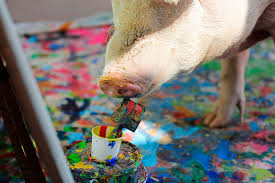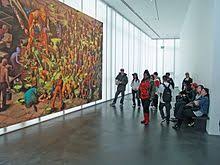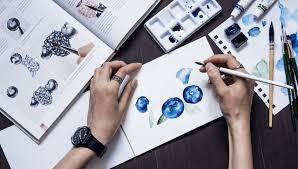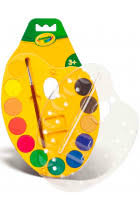bulk products
ART UNIONS AND CREATIVE UNIONS OF RUSSIA ON THE TURN OF THE XIX-XX CENTURIES (part 3)
 “Bauhaus” (German: Bauhaus – building house) – art educational institution and creative association in Germany. It was founded in 1919 by the architect V. Groppius in Weimar, in 1925 it was transferred to Dessau, in 1933 it was abolished by the fascist authorities. The leaders of the Bauhaus (H. Mayer, J. Albers and others), relying on the aesthetics of functionalism, set out to develop new principles of shaping in plastic arts; they strove for a comprehensive artistic solution to the domestic environment, developed the ability of students to creatively comprehend new materials and designs, and taught them how to create solid and practical products. A significant place was given to design teaching. The main link of the educational process at the Bauhaus was the students’ labor practice in production, art and design workshops, where, along with studies and studies, they created architectural projects, decorative plastic works, and samples of mass household products. Continue reading
“Bauhaus” (German: Bauhaus – building house) – art educational institution and creative association in Germany. It was founded in 1919 by the architect V. Groppius in Weimar, in 1925 it was transferred to Dessau, in 1933 it was abolished by the fascist authorities. The leaders of the Bauhaus (H. Mayer, J. Albers and others), relying on the aesthetics of functionalism, set out to develop new principles of shaping in plastic arts; they strove for a comprehensive artistic solution to the domestic environment, developed the ability of students to creatively comprehend new materials and designs, and taught them how to create solid and practical products. A significant place was given to design teaching. The main link of the educational process at the Bauhaus was the students’ labor practice in production, art and design workshops, where, along with studies and studies, they created architectural projects, decorative plastic works, and samples of mass household products. Continue reading
VITEBSK ART SCHOOL (part 2)
 Having learned the lessons of new European art and declaring himself to be a rapidly maturing master, M. Chagall returned to Vitebsk on the eve of the First World War. In fact, in less than a decade, from an unknown student of a provincial artist, he grows into one of the leading masters of the emerging avant-garde. And this is not surprising if you pay attention to how easily and organically he created his original art system, attracting childishly naive imagination and romantic metaphor, intrepidly departing from realism and ahead of the masters of Western Europe, whose evolution indicates the intense efforts made to free oneself from the tenacious embrace of the artistic tradition. Continue reading
Having learned the lessons of new European art and declaring himself to be a rapidly maturing master, M. Chagall returned to Vitebsk on the eve of the First World War. In fact, in less than a decade, from an unknown student of a provincial artist, he grows into one of the leading masters of the emerging avant-garde. And this is not surprising if you pay attention to how easily and organically he created his original art system, attracting childishly naive imagination and romantic metaphor, intrepidly departing from realism and ahead of the masters of Western Europe, whose evolution indicates the intense efforts made to free oneself from the tenacious embrace of the artistic tradition. Continue reading
HISTORY OF ORIGIN AND DEVELOPMENT OF ART OF ENAMEL (part 2)
 The Egyptian manner of performing jewelry was developed in the post-Dynastic period beyond the borders of Egypt. Ornaments from the burial of the wife of Pharaoh Amenemkhet from Meroe (Nubia) show that here as early as the 1st century AD the Egyptian technique of fixing the inserts has been preserved, albeit in a rougher form. In these decorations, instead of inserts, there are real molten enamels of the classic Egyptian palette. When making the found gold jewelry, the master lost sight of the fact that the volumetric shrinkage of molten enamel should be leveled with additional application and firing. The enamel plunged into the cells and resembles a modern cloisonne, rather than notched, enamel, carefully polished in one plane. Continue reading
The Egyptian manner of performing jewelry was developed in the post-Dynastic period beyond the borders of Egypt. Ornaments from the burial of the wife of Pharaoh Amenemkhet from Meroe (Nubia) show that here as early as the 1st century AD the Egyptian technique of fixing the inserts has been preserved, albeit in a rougher form. In these decorations, instead of inserts, there are real molten enamels of the classic Egyptian palette. When making the found gold jewelry, the master lost sight of the fact that the volumetric shrinkage of molten enamel should be leveled with additional application and firing. The enamel plunged into the cells and resembles a modern cloisonne, rather than notched, enamel, carefully polished in one plane. Continue reading




